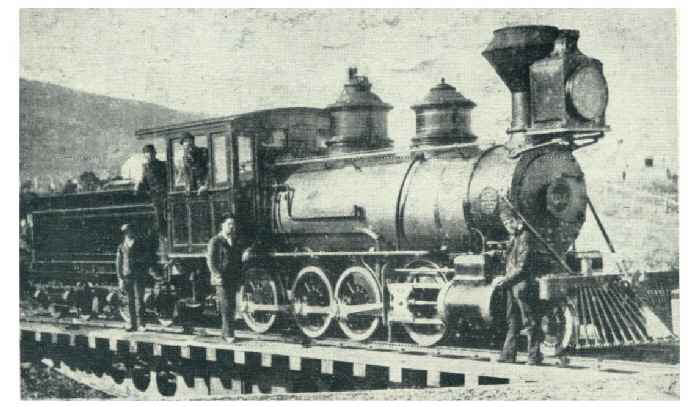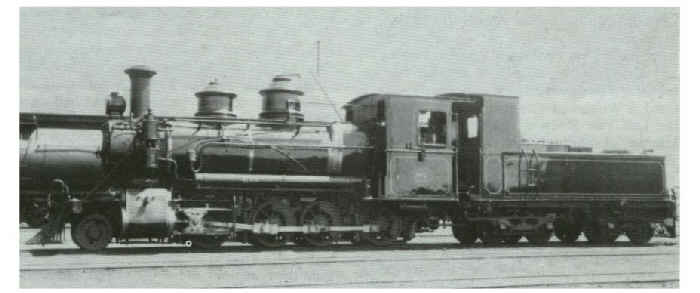Introduced: 1879
Number in Class: 6

Original configuration
With later modifications
Locomotive Specifications
|
|
| Engine Weight: 26.2 tons | Tender Weight: 16.0 tons |
Total Weight: 42.2 tons | Adhesive Weight: 23.0 tons |
| Length over Buffers: 44' 10" |
Total Wheelbase: 39' 2" | Engine Wheelbase: 17' 10" | Coupled Wheelbase: 11' 4" |
| Tender Wheelbase: 12' 7" |
Driver Wheel Dia.: 36" | Cylinders HP: Two - 15" x 18" |
Cylinders LP: |
| Grate Area: 15.7 sq ft | Evaporative Area: 812 sq ft |
Superheated Area: | Working Pressure: 130 psig |
| Tractive Effort: 11700 lbs f |
Coal Capacity: 2.1 tons | Oil Capacity: | Water Capacity: 1300 gals |
| Remarks: These distinctive "Consolidation" freight locomotives were practically the same as the highly successful engines Baldwin had designed and built for America's pioneer narrow-gauge railwy, the 3'0" Denver and Rio Grande. With small coupled wheels the "T's" were normally restricted to a maximum speed of 18 m.p.h., but sometimes hauled express trains between Oamaru and Dunedin. In 1900, these locomotives were reboilered and equipped with Belpaire fireboxes raising their working pressure to 160 psig and the heating surface to 920 sq ft and treated to a steel cab. For several years, these Baldwin's were the most powerful locomotives on the NZR. |